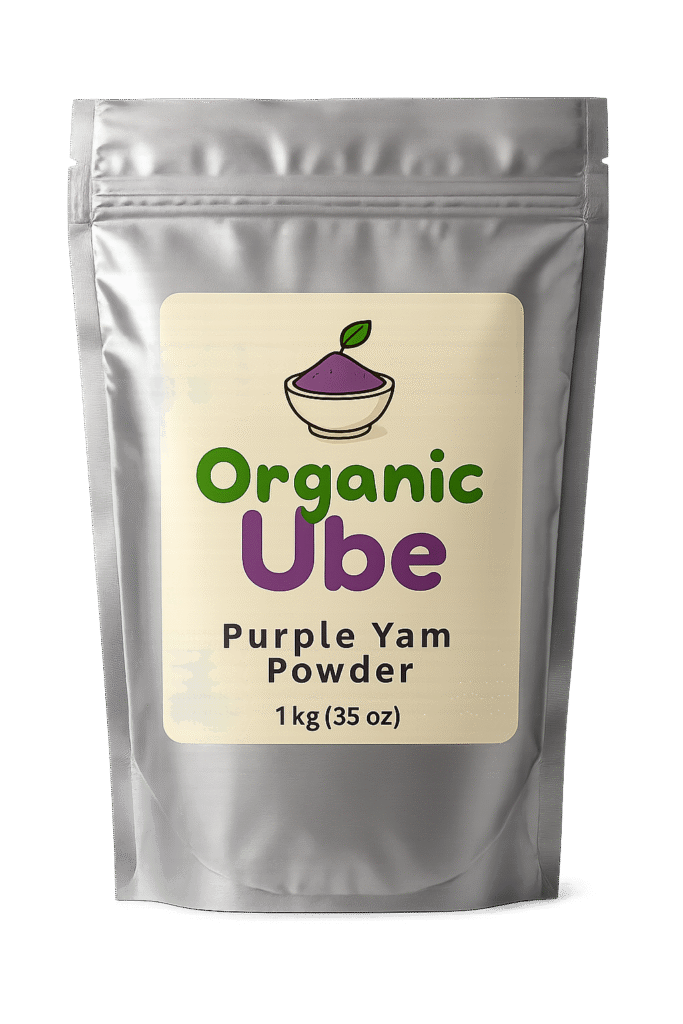The History of Ube: How a Filipino Treasure Became a Global Trend
Introduction
Few foods capture both heritage and modern creativity quite like ube the bright purple yam powder from the Philippines that’s now captivating dessert lovers across the globe. From traditional Filipino kitchens to trendy New York bakeries, ube’s journey is a fascinating blend of culture, history, and innovation.
But how did a root vegetable from tropical islands become a symbol of global food culture? Let’s travel back through time to discover the story behind ube, the Filipino treasure that’s painting the culinary world purple.
1. Ancient Roots in the Philippines
Ube (pronounced OO-beh) is scientifically known as Dioscorea alata, a species of yam native to Southeast Asia. Archaeological evidence suggests that Filipinos have been cultivating and consuming ube for thousands of years, long before Western influence reached the islands.
In early Philippine communities, ube was more than just food it was a survival crop. The tuber’s resilience made it essential during times of drought or scarcity. Easy to grow and rich in carbohydrates, it nourished generations of Filipinos.
Its stunning violet color also gave it a special place in cultural symbolism, representing abundance, creativity, and community values deeply embedded in Filipino life.

2. Ube in Colonial Times: A Blend of Traditions
When Spanish colonizers arrived in the 16th century, they introduced new culinary ingredients and cooking methods to the islands. Ube easily found its way into these new fusion recipes.
By the 19th century, the famous “ube halaya” a sweet, creamy yam jam had become a staple dessert served during festive occasions. Originally made with freshly grated yam, coconut milk, and sugar, it evolved during the American occupation (1898-1946), when condensed and evaporated milk became common pantry items.
This adaptation gave birth to the modern flavor profile of ube desserts velvety, rich, and comforting. What began as a humble root was now part of elaborate desserts and celebrations, symbolizing joy and family unity.
3. A Flavor That Defined Filipino Desserts
As Filipino cuisine developed through the 20th century, ube remained one of its defining elements. It became the heart of countless sweets and pastries:
Ube cake soft purple chiffon layered with ube buttercream.
Halo-halo a shaved-ice dessert combining ube halaya, sweet beans, and tropical fruits.
Ube ice cream now iconic in Filipino households.
In every form, ube carried nostalgia the flavor of celebrations, family gatherings, and Sunday afternoons spent in the kitchen. It wasn’t just dessert; it was a story, one that every Filipino could recognize by color and taste alone.
4. The Filipino Diaspora and the Birth of Global Curiosity
The global journey of ube began with Filipino migration. As Filipino communities spread across the United States, Canada, and beyond, they brought their food culture with them.
In the 1970s and 1980s, Filipino immigrants introduced ube-based desserts to their local communities through bakeries, family gatherings, and church events. At first, ube remained a well-kept secret something shared mainly within Filipino circles.
But that began to change with the rise of social media and globalized food culture. As food bloggers and chefs searched for unique, natural ingredients with visual appeal, ube’s vibrant hue and distinct flavor caught their attention.
5. Ube in America: From Hidden Gem to Mainstream Trend
By the mid-2010s, the United States experienced an “ube boom.” Filipino-American bakeries like K Café in California and Purple Dough in New York began showcasing their signature purple desserts online. Soon, the rest of America took notice.
Ube donuts, lattes, and cheesecakes appeared on Instagram feeds nationwide.
Major brands like Trader Joe’s released ube pancake mix and ube ice cream, introducing the flavor to millions of Americans.
Restaurants across Los Angeles, San Francisco, and New York started using ube in everything from waffles to cocktails.
What made ube so successful wasn’t just its color it was its balance of novelty and comfort. Its mildly sweet, nutty flavor felt familiar yet exotic, and its natural pigment aligned perfectly with the growing interest in plant-based, colorful foods.
6. Cultural Meaning in a Globalized World
While ube has achieved international fame, for Filipinos it remains deeply personal. It’s a reminder of identity, tradition, and pride. Many Filipino-Americans describe seeing ube on American menus as an emotional moment proof that their culture is finally recognized and celebrated.
However, this global popularity also raises an important question: How do we honor the roots of ube while embracing its evolution?
Some Filipino chefs emphasize education teaching the origins of ube and ensuring it’s not reduced to just “a purple flavor.” Others view its global rise as an opportunity to tell the Filipino story to a wider audience.
7. The Science and Nutrition Behind the Color
Beyond its cultural and culinary impact, ube is also valued for its nutritional content. Its signature purple hue comes from anthocyanins, powerful antioxidants linked to improved heart health and anti-inflammatory effects.
Compared to regular sweet potatoes, ube is lower in sugar and rich in fiber, making it a smart choice for balanced desserts or smoothies. This has made ube increasingly popular in the health and wellness market appearing in protein powders, smoothie blends, and natural baking mixes.
8. What the Future Holds for Ube
The purple revolution isn’t slowing down. With global food trends favoring authenticity, sustainability, and cultural fusion, ube perfectly fits today’s culinary values.
In the United States, small businesses and online stores are offering ube powder and extract for home bakers, while larger brands continue to experiment with ube-inspired snacks and beverages.
More importantly, ube is inspiring a new generation of Filipino-American chefs to celebrate their roots proudly proving that tradition and innovation can coexist beautifully.
Conclusion
From ancient Filipino farmlands to modern dessert bars in New York and Tokyo, ube’s story is one of resilience, creativity, and cultural pride. It connects the past and present, the local and global, the traditional and the trendy.
What began as a simple tuber dug from the earth is now a global symbol of color, sweetness, and community. And as the world continues to fall in love with its flavor, one thing is certain: ube isn’t just a trend it’s a legacy.

